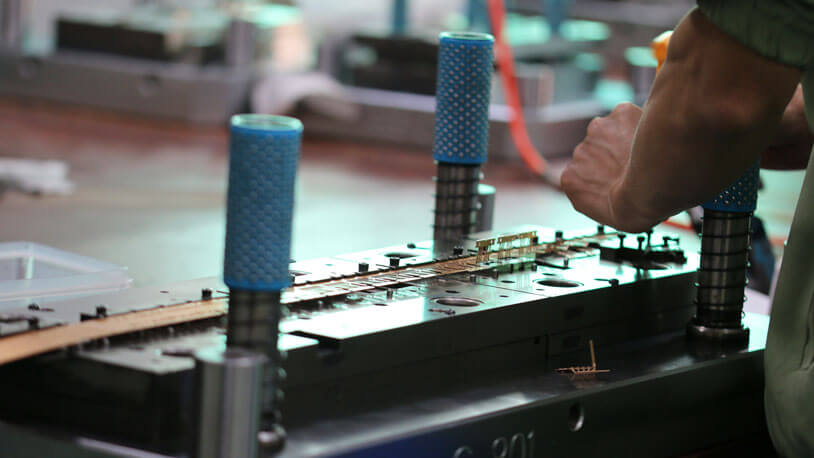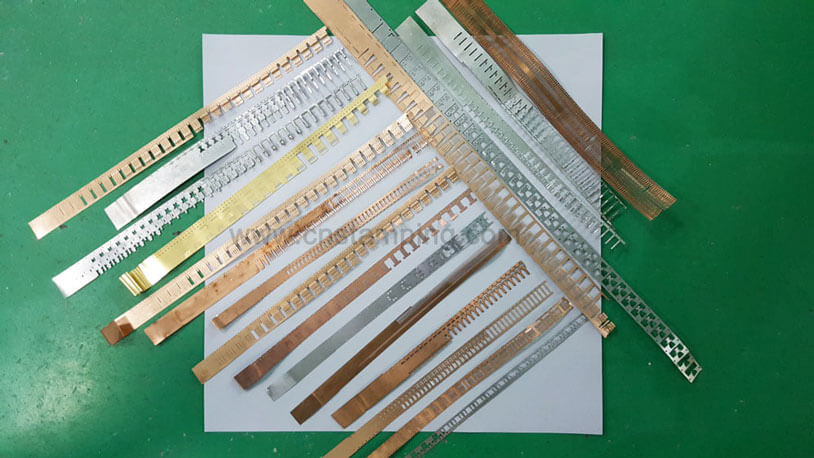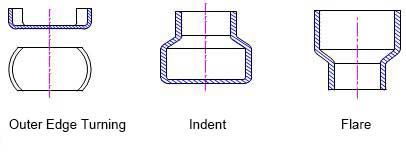Metal Stamping: The Ultimate FAQ Guide
1. What is Metal Stamping?
2. Metal Stamping Applications
3. What are the Advantages of Progressive Die Stamping?
4. Metal Stamping Three Main Elements
5. What are the Classifications of Metal Stamping?
6. How to Reduce Precision Metal Stamping Cost?
Metal stamping is a kind of processing process with better part quality, high production efficiency and low cost, which cannot be replaced by other processing methods. It is widely used in manufacturing industries such as machinery, vehicles, electric motors, electrical appliances, instruments and meters, agricultural machinery, light industry, daily necessities, aerospace, electronics, communications, ships, railways and armaments.
The shortcomings of metal stamping process are:
for small quantity stamped metal parts, stamped metal parts tooling cost makes the cost significantly higher, so economic batches are generally required; at the same time, there’ production preparation cycle tooling requires.

What is Metal Stamping?
By using stamping press and its external equipment to obtain a certain part’s shape and size by applying tooling pressure to sheet material.
Metal Stamping Applications
Sheet metal stamping process has a wide range of applications, there are stamping products in almost all sectors of the national economy. Such as automobiles, airplanes, medical equipment, electrical appliances, motors, instruments, and light industrial and daily-use products all occupy a large proportion.
What are the Advantages of Progressive Die Stamping?
Metal Stampings is an advanced metal processing method that has many technical and economic advantages when compared to other processing methods (cutting).
1. High productivity. Stamping machine one shot can get one part, and punching machine one-minute stroke ranges from dozens of times to thousands times. At the same time, products with better profile.
2. Simple operation. Especially suitable for mass production and automation, under the press simple stamping, we can get complex shaped parts.
3. High precision and stable quality. Stamped parts’ quality is mainly guaranteed by the tooling, after stamping process, parts can be directly used for assembly and interchangeability.
4. High material utilization rate. The utilization rate of common stamping materials can reach 70% to 85%, some as high as 95%.
5. Stamping is a plastic deformation, the deformation of metal hardening, can be obtained from the qualified parts which with light, good rigidity, high strength.
6. The larger batch size, the lower product cost.

Metal Stamping Three Main Elements
- Stamping machine
- Stamping die
- Sheet Material
What are the Classifications of Metal Stamping?
Stamping process can be divided into two categories according to its deformation nature: material separation and forming, each of which includes many different processes.
Punching
It includes two processes: blanking and piercing.
- Blanking: stamp sheet material along closed line, which is stamp out is workpiece, rest is waste, so design size based on die insert, clearance per Punch insert.
- Piercing: Stamp sheet material along closed line, which is stamp out is waste material, so design size based on punch insert, clearance per die insert.
Shearing
Cut sheet material with the die, cut line not closed.
Notching
Partial cut on the sheet material and the notched part is bent.
Trimming
Cutting off excess material from the edges of the drawn or formed semi-finished products.
Slitting
Cut the semi-finished product into two or several workpieces, often used for double stamping.

Bending
Bend the material into a certain shape by tooling (V/U/Z/L shape).
Rounding
Rounding the end of sheet material.
Twist
Twist partial of sheet material at an angle relative to other area.

Deep drawing
Sheet material stamped into a hollow workpiece with the wall thickness basically unchanged.
Thin drawing
Change hollow part size by reducing diameter and wall thickness and increasing workpiece height to get the required bottom thickness and thin walled workpiece.
Hole Turning
Turning the sheet material which edges with holes on or workpiece into vertical edges.

Outer Edge Turning
Turning up the workpiece’s outer edge with a rounded or curved vertical edge.
Indent
Reduce hollow workpiece’s opening diameter.
Flare
Enlarging hollow parts mouth, often used for tubes.

Undulation
The embossing of ribbing, patterns or writing on sheet material or workpiece, with thinning throughout the thickness of the undulation.
Rolling
The edge of the hollow part is rolled into a certain shape.
Expansion
Hollow part (or tube material) is expanded in the radial direction in the shape of a convex belly.

Spinning
Using driving rods or rollers to drive the slab blank into a certain shape (thinning and not thin two).
Shaping
Correcting and shaping workpieces with inaccurate shapes.
Leveling
Flatten the uneven surface or bend workpiece.

Embossing
Change workpiece thickness to emboss a text or pattern on the surface.
Positive extrusion
Sheet material in side the die is in a plastic deformation state under punch pressure, so it is extruded from the die, and metal flow direction is the same with punch movement.
Anti-extrusion
During the metal extrusion process, the plastic flow along the gap between punch & die, flow direction is opposite to punch movement.
Compound extrusion
Combine positive and negative extrusion.

How to Reduce Precision Metal Stamping Cost?
Stamping manufacturer develop a perfect stamping process before production, only reasonable metal stamping process to ensure that less failure, less scrap during production. Stamping products precision are dependent on the stamping die, must ensure tooling quality. Especially for mass production, tooling quality affects stamping cost. There is also using reasonable and more cost-effective materials as far as possible to save cost for both customer and stamping factory.
The Best Precision Metal Stamping Manufacturer in China
There are many well-known precision metal stamping companies in China, and heju stamping is one of them. Heju stamping has over thirty years of experience in precision metal stamping manufacturing, and with over 50+ experienced metal stamping engineering team, it is the first choice for customers worldwide. If you are starting a custom metal stamping project, contact heju directly.
[velocity type=”youtube” id=”mNSD0STr5nM” img=”https://www.cnstamping.com/wp-content/uploads/2022/01/progressive-stamping.jpg” alt=”Play” color=”#FFFFFF” bkg_color=”#000000″]
